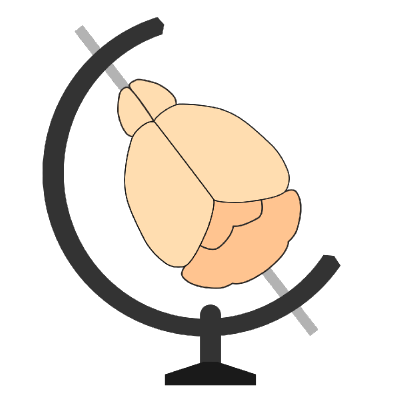cellfinder.core#
Cell detection#
Methodology#
Cell detection in cellfinder has three stages:
2D filter each image plane independently.
3D filter small batches of planes.
Merge detected cell candidate voxels into into structures.
2D filtering#
Code can be found in cellfinder/core/detect/filters/plane.
Each plane of data is filtered independently, and in parallel across a number of processes.
This part of processing performs two tasks:
Applies a filter to enhance peaks in the data (
cellfinder/core/detect/filters/plane/classical_filter.py). This consists of (in order)a median filter (
scipy.signal.medfilt2d)a gaussian filter (
scipy.ndimage.gaussian_filter)a laplacian filter (
scipy.signal.laplace),inverting the data
normalising to [0, 1]
scaling to clipping_value.
Because applying several of the filters is more time efficient when done on floating point data types, each plane is cast to
float64in this step.Works out which areas of the plane are inside or outside of the brain. To do this the plane is divided into square tiles that have edge length
2 * soma_diameter. The lower corner tile is assumed to be outside the brain, and any tiles that have a mean intensity less than1 + mean + (2 * stddev)of the corner tile are marked as being outside the brain. This speeds up processing in later steps by automatically skipping over tiles marked as outside the brain in this step.
Memory usage during 2D filtering, for each plane, is the following:
The plane itself is read into memory.
During filtering, a copy of the plane is made and cast to
float64.A small
uint8mask is created to mark areas of the plane that are inside/outside of the brain.
3D filtering#
Code can be found in cellfinder/core/detect/filters/volume/ball_filter.py.
Both this step and the structure detection step take place in the main Python process, with no parallelism. As the planes are processed in the 2D filtering step, they are passed to this step. When ball_z_size planes have been handed over, 3D filtering begins.
The 3D filter stores a 3D array that has depth ball_z_size, and contains ball_z_size number of planes. This is a small 3D slice of the original data. A spherical kernel runs across the x, y dimensions, and where enough intensity overlaps with the spherical kernel the voxel at the centre of the kernel is marked as being part of a cell. The output of this step is the central plane of the array, with marked cells.
Memory usage information during 3D filtering:
ball_z_sizeplanes at a time are stored.Twice this amount of memory is required to roll the array each time a new array is fed to the 3D filter stage.
Structure detection#
Code can be found in cellfinder/core/detect/filters/volume/structure_detection.py.
This step takes the planes output from 3D filtering with marked cell voxels, and detects collections of voxels that are adjacent.
Memory usage information during structure detection:
Two planes are cast to
uint64and are stored at the same time.
